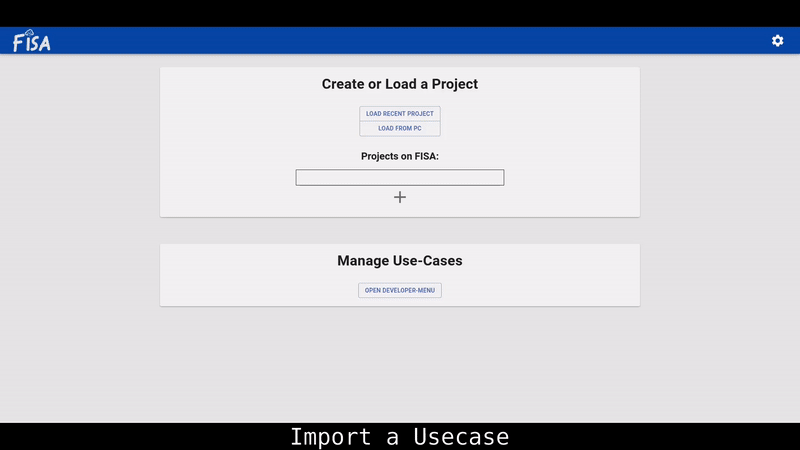A tool to setup a SensorThings-Datamodel on a visual basis.
You need to have docker and docker-compose installed on your machine
Download the docke-compose.yml file with wget https://raw.githubusercontent.com/FISA-Team/FISA/master/docker-compose.yml (Linux) or directly from
docker-compose.yml if you want just the FISA-Application.
Download the docke-compose.extended.yml file with wget https://raw.githubusercontent.com/FISA-Team/FISA/master/docker-compose.extended.yml (Linux) or directly from
docker-compose.extended.yml if you want the FROST-Server inside a docker-container as well.
Open the terminal and navigate to the location of the docker-compose.yml / docker-compose.extended.yml file
If you use the decker-compose.extended.yml rename it to docker-compose.yml and start the application with docker-compose up -d. The frontend is accessible on port 3000, the backend on 8081 and the FROST-Server on 8080.
To use the application, you need a FISA-Document that describes a abstract use-case that is the base for your project. Examples can be found in the examples-folder.
After uploading a use-case you can create a new project on the main page of the application.
The backend ist based on Spring-Boot and can be build via the maven-goal package. To execute the tests, run the maven goal test.
Configuration options for the backend:
- Root-Path of the API: server.servlet.context-path
- Path to save the use-case and project files: app.filesDirectory
The frontend uses react and is created via create-react-app. To execute it, run npm i to install the dependencies and npm run start to run only the frontend. To execute frontend-tests, run npm run test
Configuration options for the frontend:
- Location of the Backend: API_URL
- Define Usecases with the help of a FISA-Document
- Clone already defined Entities
- Link already defined Entities
- Pick a Location-Point or Polygon with the help of a Card-Function
- Upload the finished Project to your FROST-Server (create the Entities)
- Save the Project to reuse it later
The specification of the FisaDoc in typescript notation
interface FisaDocument {
name: string;
fisaObjects: FisaObjectDefinition[];
fisaTemplate: FisaObject[];
}
interface FisaObjectDefinition {
name: string;
caption: string;
infoText: string;
isTopLayer: boolean;
mapsTo: string;
exampleData: ExampleData | null;
attributes: FisaObjectAttributeDefinition[];
children: ChildDefinition[];
isNotReusable: boolean;
positionAttributes: [string, string];
}
interface ExampleData {
count: number;
valueRange: {
max: number;
min: number;
},
timeRange: {
min: DateTime;
max: DateTime;
}
}
interface FisaObjectAttributeDefinition {
name: string;
infoText: string;
valueType: "string" | "number" | "boolean" | "dropdown" | "exampleDropdown" | "polygonPosition"
value: string | number | boolean | [number, number][];
isPredefined: boolean
dropDownValues: string[] | number[] | null;
mapsTo: string;
validationRule: RegExp;
}
interface ChildDefinition {
object: string;
quantity: number;
infoText: string;
}
You can find example FISA-Documents in the example folder.
